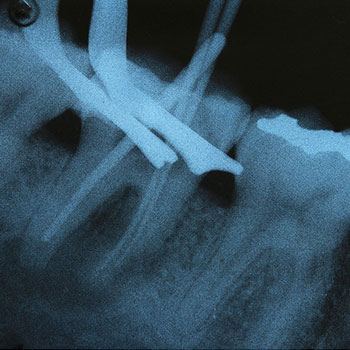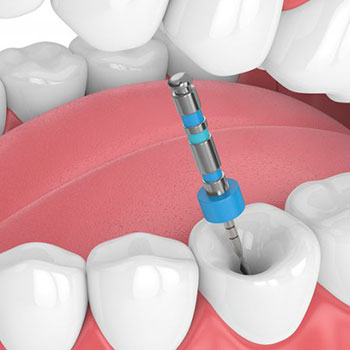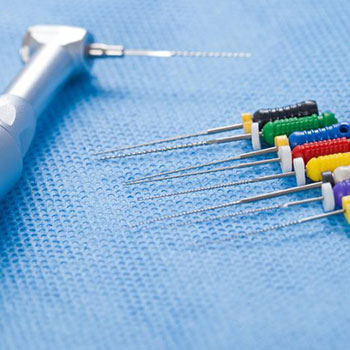Root Canal by Livermore Dentist
A root canal treatment is a procedure used to repair and save a badly decayed or infected tooth. The procedure relieves dental pain and is necessary for patients who have inflammation or infection in the roots of a tooth. Your dentist, who is called an endodontist, or a root canal specialist, will carefully remove the pulp inside the tooth, cleans, disinfects and shapes the root canals, and places a filling to seal the space.
People fear root canals because they assume that they are painful. But, in reality, the procedure itself is no more painful than getting a filling. The discomfort the patients have been experiencing while waiting to get the root canal. The pain they feel during this time is truly painful in comparison to the procedure itself.
Common Reasons for Root Canals
The pulp of the tooth is contained in tiny canals, also referred to as the nerve, which originates from the pulp chamber. When there is any damage or infection of the nerve, patients will need a root canal. The most common reasons for root canal therapy include:
- Tooth decay attacks the tooth, penetrates through the enamel and then the dentin, and eventually, into the pulp.
- A tooth has become infected from the decay.
- An injury like a chipped or broken tooth occurs and the nerve becomes exposed.
- A tooth is slowly dying, whether from age or past trauma and did not get the treatment needed at the time of injury.
Don’t be nervous if your dentist or endodontist tells you that you need a root canal procedure in order to treat a damaged or unhealthy tooth. Dentists treat and save millions of teeth this way each year. Again, root canals relieve pain and make teeth healthy again. Soft tissue called pulp is located underneath the white enamel and a hard layer (dentin). This tissue contains blood vessels, nerves, and connective tissue, and helps the root grow the root during development. When a tooth is fully developed, it can survive without the pulp because the tooth continues to be nourished by the tissues surrounding it.
If you have not received a dental checkup in over a year, it is time for you to come in for an appointment at Foothill Dental Care in Livermore. Teeth cleanings and oral check-ups are the best way you can help yourself disease from forming. Dentists are able to detect early signs of issues that can get worse in the long run. Call Foothill Dental Care to schedule an appointment today for any of your dental needs.
The Root Canal Process

Root canal therapy may need to be done over the course of multiple visits. Before the procedure, your dentist will let you know how many appointments they believe is necessary to complete the canal. In some cases, if there was an infection or abscess in the tooth, your dentist may need you to be on antibiotics before finishing the root canal. When the root canal procedure does begin, your dentist will start the appointment by numbering the affected tooth. After your tooth is numb enough, the procedure usually contains:
1. A dental x-ray showing the whole tooth is taken so that the dentist can refer to it during the procedure.
2. A rubber dam will be placed over your mouth to be used as a shield, made from either latex or non-latex materials, and keeps the tooth isolated from any saliva and dry before the procedure is completed. Different chemical solutions are used to disinfect the inside of the tooth, so the rubber dam also helps keep these solutions from getting inside your mouth.
3. Next, a small hole is drilled through the tooth into the area known as the pulp chamber, where the tooth’s nerve is located.


4. Your dentist uses tiny files designed to remove the nerve and any infected tissue from the tissue. Certain files can be used by hand; others are connected to a rotary instrument, which is essentially a slower moving handpiece. You may require another x-ray at this point, usually to help see the length of the root. It’s important that the nerve is entirely removed in order to prevent toothaches after the procedure. If some of the nerves are left behind, it could re-infect the tooth, resulting in more treatment or even extraction. This is the longest part of the procedure since your dentist will need to close the tip of the tooth in order to completely remove the nerve.
5. Once the dentist is assured that the tooth has been totally cleaned out, the tooth is dried out. Next, your dentist will need to seal the inside of the tooth. This is done by placing material called “gutta-percha” into the tooth.
6. Your dentist will clean out any residual decay from the tooth and will then decide to put either a temporary filling close the tooth or continue to place a permanent filling. If your root canal is performed by an endodontist, who is specialized in root canals, they will place a temporary restoration and you’ll need to go back to your general dentist for the restoration. In many cases, your dentist will recommend getting a crown put on to the tooth. Crowns are designed to help teeth that may become brittle and weak over time since the nerve and blood supply to the tooth has been removed.
Root Canal Recovery
As soon as the anesthesia has worn off, some discomfort is expected during recovery, especially after the amount of work that has been done. This will be particularly apparent if there was already swelling or inflammation present. Most of the discomfort is mild and will go away after a few days. You can take ibuprofen (Advil) or acetaminophen (Tylenol) to help manage the discomfort. In addition, you need to avoid chewing on the treated tooth until all of the inflammation has gone. By doing this, you will further help promote healing of the nearby tissues.
A dental crown is usually needed in order for teeth to be properly protected when they experience heavy chewing forces since teeth treated with a root canal-treated are more brittle and prone to chipping or breaking. A crown is particularly important to posterior teeth (in the back of the mouth) since they need to withstand a lot more force comes to anterior teeth (in the front of the mouth).
Root Canal with our Livermore Endodontists

Modern endodontic treatment is has been a lot more advanced in recent decades. Depending on the condition of your teeth, root canals are very similar to getting a routine filling and are usually done after one or two appointments. Root canals are a fairly painless and very effective treatment. At Foothill Dental Care in Livermore, we strive to help our patients get back to smiling, biting and eating. If you believe you need a root canal, give us a call at (925) 961-5484.
Root canal treatments have a success rate of around 95%. However, it is not 100% successful. Sometimes there are complications (like curved roots and calcified root canals) that make it very difficult to successfully complete root canal treatment.
You can keep your teeth free of decay by regularly brushing and flossing. A healthy diet low in sugar and acidic drinks like soda is also good. You should also get regular cleanings and exams by your dentist. Those who are active in sports should have a custom mouthguard made to help protect your teeth from injury.
The cost of root canals is much lower if you have dental insurance. Most plans cover a good amount of the cost of procedures like root canals, fillings and crowns after a deductible is met.
Teeth are usually treated in two appointments, but patients can generally expect appointments of about 90 minutes each. In some cases, you made need three or more appointments.
There is no legitimate, scientific evidence that can link root canal treatments to disease elsewhere in the body.
The main goal for a dentist is to save your natural teeth. Endodontic treatment is highly successful, and many root canal-treated teeth can last someone their whole life. There are other treatments that can replace an extracted tooth, like a bridge or implant. These treatments generally require longer treatments and may require other procedures to be done on nearby teeth and tissue.
